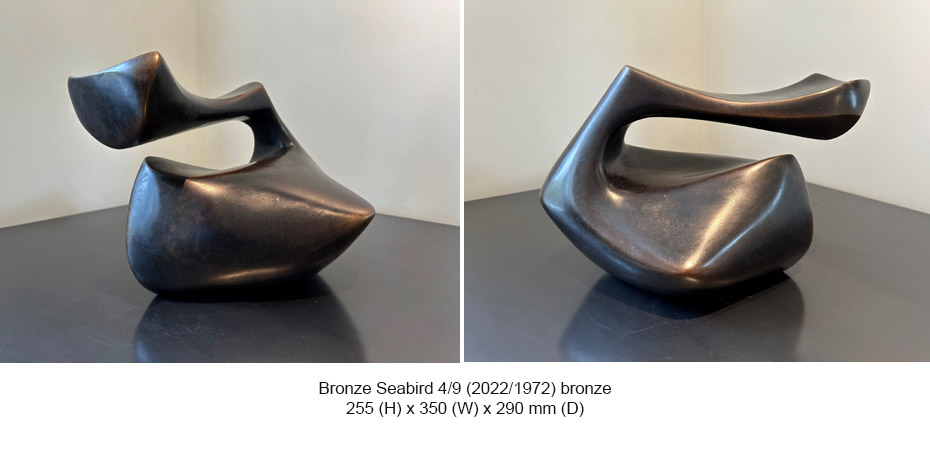Born in London in 1939, Ashken was educated at Bedales, a co-educational boarding school in Hampshire, England and it was here that she gained her silversmithing hallmark – the youngest person ever to do so. In 1963 she moved to Wellington where she was awarded many silversmithing and jewellery commissions – the most notable included a silver and greenstone Bishops’ crosier for Nelson Cathedral and a NZ Arts Council gift of a silver and amethyst pendant, which was presented to Princess Anne in 1970. Sculptural works constructed from steel and cement, carved out of stone and wood, or built from wire and plaster of Paris, then cast in bronze and aluminium, complete Ashken’s oeuvre.
Ashken won the second Frances Hodgkins Fellowship (University of Otago) in 1967. Her most recognisable work is the landmark Albatross (1985-86), a 3.5 metre high water sculpture overlooking the lagoon on Wellingtons waterfront. This work became the catalyst for the birth of the Wellington Sculpture Trust.
This year (at 80 years old), Ashken was one of 20 artists selected to exhibit in Sculpture in the Gardens at the Auckland Botanic Gardens, with her bronze Dogon Bird. She also completed her most recent work, Luna carved from marble. A bronze casting is included in our 2019 holiday exhibition, Fragile Planet.
Inspired by Brancusi (whose Paris studio she stumbled upon late one afternoon in 1961), Tanya reveals a constant artistic struggle to inter-relate concept and form and to shape what emerges. With a passionate love of seabirds and animals, the natural world is both the source and purpose for Tanya’s work. Her challenge – to give performance and solidity to the constantly evolving, moving and changing effects of nature. The result – ideas abstracted into essential form, encouraging the viewer to let the eye travel through the line of the work and beyond.
“She quotes rather than copies nature in the discovery of her own unique forms, and she treats her subject matter with a sympathy and a delicacy which is indicative of a deep concern for the natural world.” Stephen Cain
If nature has been an ongoing inspiration, then culture has provided a balance in Tanya’s quest for form – pre-Classical and Classical traditions of her European heritage a strong motivation. Her sensuous sculptures embody strength, elegance and timelessness – Classical in spirit and organic in form.

















